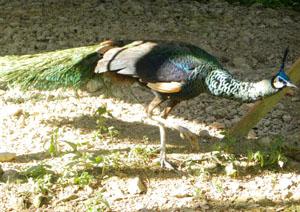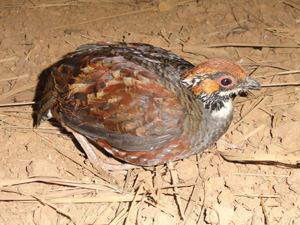Oinam Sunanda Devi
This proposal is aimed at improving the limited knowledge on the abundance and status of threatened and endemic avian species within the IBA. The study will further initiate an awareness campaign involving local communities in order to help to halt and conserve the local forests and their resources which continue to degrade at a concerning rate.

The endangered Green Peafowl.
The present research work will provide detailed information on the current abundance and status of avifauna in particular the threatened and biome restricted species of the data deficient Yangoupokpi-Lokchao Wildlife Sanctuary, Manipur (IBA Site no. IN-MN-08) which is situated along the Indo-Burma border. The study will also help to confirm the presence of the endangered Green Peafowl Pavo muticus, which in recent years has only occasionally been encountered in the sanctuary and hence its current status is unknown. Birdlife International (2010) stated that the status clarification of this species in India is a must. Furthermore, the study will help to identify the major threats which led to its population decline. As very few studies about the avifauna were conducted within this important IBA (Choudhury 2000, 2005, 2009), our project will not only improve the bird checklist and other threatened and endemic species for the Sanctuary but also add important data on abundance and distribution.

Common Hill Partridge.
Our study will further focus on training a few selected local youths at least 10 per batch in basic bird survey techniques and the use of field equipments such as GPS, compass etc. The training programme was planned in such a way that the trainees will become able to act as field guides to tourists and researchers, enabling them to generate an additional and/or alternative source of income apart from hunting and collecting bio-resources.
Awareness campaigns among local communities and meetings with the community chiefs will help educating the people about the importance of the birds and the forest itself for their livelihoods. Overall this study will significantly improve the avifaunal knowledge of this poorly known IBA and will further increase the awareness of local people about their forest and its resources, apart from motivating them to join future conservation campaigns.